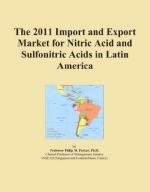|
This section contains 926 words (approx. 4 pages at 300 words per page) |

|
Overview
Nitric acid (NYE-trik AS-id) is a colorless to yellowish liquid with a distinctive acrid (biting), suffocating, or choking odor. The acid tends to decompose when exposed to light, producing nitrogen dioxide (NO2), itself a brownish gas. The yellowish tinge often observed in nitric acid is caused by the presence of small amounts of the nitrogen dioxide. Nitric acid is one of the strongest oxidizing agents known and attacks almost all metals with the notable exceptions of gold and platinum.
Key Facts
Other Names:
Aqua fortis; engraver's acid; azotic acid
Formula:
HNO3
Elements:
Hydrogen, nitrogen, oxygen
Compound Type:
Inorganic acid
State:
Liquid
Molecular Weight:
63.01 g/mol
Melting Point:
−41.6°C (−42.9°F)
Boiling Point:
83°C (180°F); decomposes
Solubility:
Miscible with water; decomposes in ethyl alcohol; reacts violently with most organic solvents
Nitric acid has been known to scholars for many centuries. Probably the earliest description of its synthesis...
|
This section contains 926 words (approx. 4 pages at 300 words per page) |

|


